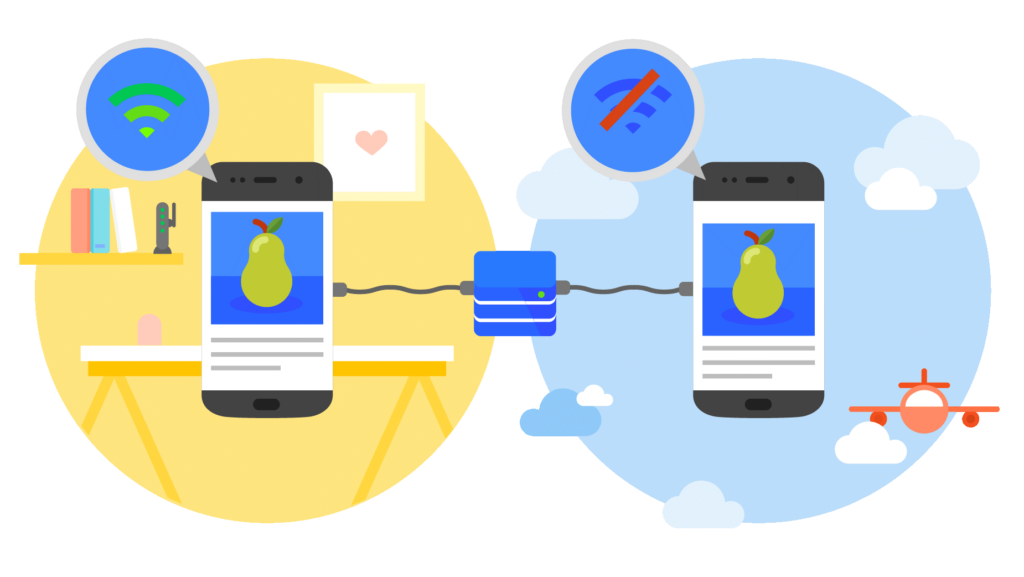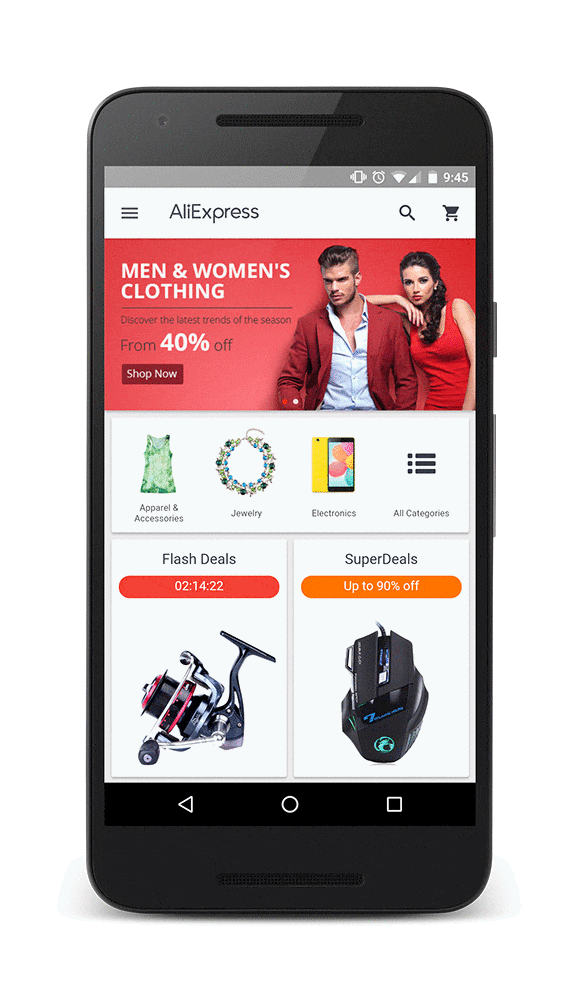A progressive web app, or PWA, is a development in mobile technology which has only recently begun to revolutionise how we interact with the internet and applications on our mobile phones and smart devices. But what are they? Why are they important and what can they do for your business?
In this article we’ll be going through the fundamentals of what a progressive web app is, how it can change your mobile e-commerce strategy, benefit it and how best to set up your own PWAs.
Progressive Web Apps
The first question that is no doubt in many peoples’ minds is ‘What exactly is a progressive web app?”. Put simply, a progressive web app is a mobile application on a smart phone or smart device which can access content on the internet quickly, reliably and in an appealing, immersive way. Combining both the benefits and features of web and mobile apps, PWAs are single installation apps which are great at enhancing user experience beyond both traditional forms of application.
A successful PWA should be reliable, allowing users to gain access to your online content at anytime, anywhere, even without connection to the internet. It should also be fast, responding quickly to the user’s actions and producing minimal loading times. Finally, PWAs have to be engaging, expressing the same feel, quality and user experience of any normal mobile application.
By incorporating all these aspects into one, a PWA can create a huge amount of positive traffic to your online content and, hence, business.
Why use them?
Whilst a simple concept, PWAs are not always necessarily recognised nor grasped by many businesses, a neglection which can greatly hinder their success across mobile e-commerce platforms in the future and effect their popularity and sales.
The whole point of the creation of PWAs was, and is, to enhance user experience. Much of modern ecommerce is centered around increasing and enhancing user experience to attract new customers and maintain existing ones. PWAs allow businesses to engage with their consumer base in a quick, easy-to-use way which increases conversions and popular opinion through convenience and innovation.
By being reliable, PWAs provide a constant, ‘turn-to’ portal for customers and consumers where ever they are, gaining access to your web content even in areas without a connection or uncertain network conditions. Furthermore, PWAs can be accessed across numerous platforms (known as cross-platform compatible) and will still provide the same content without any compromises or difficulty, creating a universal app which is both comforting and convenient to users.

Image from Google.
Being fast and direct creates not only a positive response from your users, but also helps keep them actively connected to you and your app. Studies have shown that up to 53% of users will abandon a site if it takes more than 3 seconds to load and apps will lose 20% of their users for every step they have to take between first selecting the app and getting to the landing page. PWAs also save on disk space, only need a one-time, quick installation and are updated frequently, aspects which only further increases their speed, reliability and utility for users.
Keeping an app engaging and up to date will keep users interested and increase the likelihood of reuse and exposure to the app’s content. Those apps with push notifications achieve up to three times more retention than those without and, because they do not need to be downloaded, PWAs automatically update their content, increasing speed and keeping users up to date. PWA’s also have the advantage of incorporating themselves with the device they are on, providing a full screen experience, adjustable orientation and instant user accessibility.

Creating and using PWAs
The first thing to identify when considering PWAs is whether or not you need them. Whilst PWAs are certainly increasing in popularity and have a substantial number of benefits over more traditional apps, there are some short fallings still associated with PWAs when they are compared against other applications and the kind of content you are producing may not necessarily need a PWA.
One problem with PWAs is that they can have limited capabilities when it comes to integration. This may seem counter intuitive considering above we discussed how PWAs can be used across a number of devices with uniformity and reliability, however in terms of NFC
(near-field communication) and Bluetooth functionality, PWAs are limited in their levels of integration in smart devices. This is especially true for mobile accessories such as smart watches, wireless headsets and fitness trackers. Therefore, if you are looking to target any of these or any NFC/Bluetooth aspects of smart devices, then PWAs may not be the best solution for your application.
However, if you do want to create and use a PWA, then there are three baseline criteria you must first cover in order to make it a success. These criteria include security; making sure your using HTTPS on your PWA, a Web App Manifest and a Service Worker; written in Java Script and acting as a client-side proxy. The first of these criteria is necessarily evident as it protects your PWA from hackers and third-party intrusions. The second ensures you have control over how your app appears and is launched whilst the third, and ar4guably most important aspect of your PWA, allows you to pre-cache key resources on your app, eliminating the need to be connected o a network and providing an immediate and consistent experience for users.
Aside from these three key criteria, there are also some other components to keep in mind when creating your PWA which will further enhance user experience and keep your PWA up-to-date and functional. Your PWA should be:
- Responsive
- Easy to find
- Safe
- Engaging
- Re-engaging
- Linkable
- Easily Installable
- Fresh
- Interactive
- Connectivity independent
If you can make sure your PWA incorporates all these attributes smoothly and in an attractive, easy-to-use format, users will naturally turn towards your services and products simply because of its utility and reliability in their everyday lives.
There are plenty of examples of where businesses have used the full potential of PWAs described above to increase their exposure and sales online, although two particularly notable examples include eXtra Electronics and AliExpress. By making sure their PWAs ticked all the boxes above and met the fully immersive criteria of a successful PWA, eXtra Electronics increased their user engagement by four times and their website use by twice as much as before their PWA went live, whilst AliExpress improved their conversions for new users across all browsers by 104% thanks to their PWA.

Image from Google.
Conclusions
The benefits of PWAs are evident when it comes to ecommerce and as more and more businesses and developers adopt their use, they could very well become the baseline standard for applications in general. Being quick, reliable and accessible whilst remaining engaging and immersive, makes PWAs far more appealing to users than standard native apps, and hence, increases the popularity of your webpage and business.
As the use of PWAs increases and their development advances, these incredibly useful types of application can only increase in utility and quality. This makes them very much the future of mobile ecommerce and something that all businesses using mobile applications should consider and engage with before they are left behind by the PWA’s rapid development.
